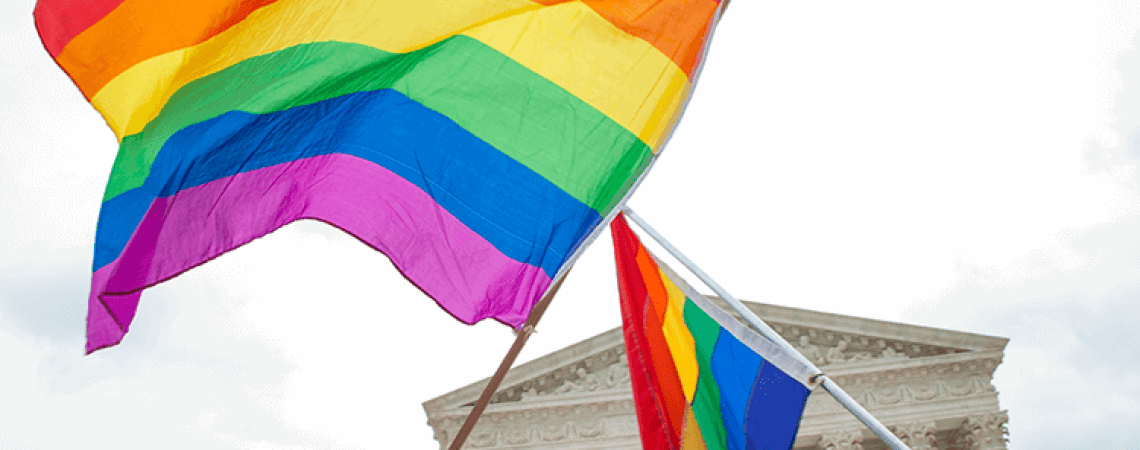“In a summer marked by riots, marches, and outrage over bias and discrimination, the U.S. Supreme Court has recently ruled that the 1964 Civil Rights Act protecting people from workplace discrimination based on sex now also applies to lesbian, gay, bisexual, and transgender (LGBTQ) applicants and employees.”
The historic 6-3 ruling was supported by two conservative justices — John Roberts and Neil Gorsuch, who wrote the majority opinion.
The ruling establishes that companies cannot fire a person because of their sexual orientation or gender identity. Neither can organizations refuse to hire or promote someone for being LGBTQ, or offer them less compensation, different work conditions, or other “privileges of employment” enjoyed by non- LGBTQ workers.
Prior to this decision, 27 states lacked any laws protecting people from discrimination on the basis of sexual orientation or gender identity. It’s a landmark decision for the estimated 7.1 million lesbian, gay or bisexual workers, and 1 million transgender workers in the US.
Are you in compliance?
In addition to promoting diversity and inclusion in their organizations, a big question for many business and talent acquisition leaders is whether hidden biases in current recruiting and employment processes are putting their organization at risk of discriminatory and legal challenges.
While few companies would reject an applicant or fire an employee because of his or her sexual orientation or gender identity, the new ruling by the Supreme Court means that hiring and promotion processes containing hidden biases against LGBTQ applicants could now be legally challenged based on claims of adverse impact.
Adverse (sometimes called disparate) impact is a political and legal term used by the Uniform Guidelines on Employee Selection Procedures to indicate that an assessment discriminates against protected subgroups. Adverse impact is usually determined with statistical tests that compare group selection ratios.
Selection ratios that are below thresholds specified in the Uniform Guidelines and case law are “on its face” evidence of discrimination and can lead to legal challenges. However, selection tools that demonstrate adverse impact may be justified if there is evidence that they are valid predictors of job- related performance and there are no alternative selection measures that are similarly valid but with less adverse impact.
Although the Bostock v. Clayton County, Georgia decision involved firing individuals based on sexual orientation or transgender status, the language of prohibiting discrimination because of an “individual’s…sex” as stated in Title VII could soon be applied to hiring discrimination claims.
What should you do now?
For most organizations, periodic reviews and audits of hiring processes for adverse impact against groups protected by Title VII are a good idea. If you’ve never conducted an adverse impact analysis of your hiring process, consider finding support from a consultant trained in I-O psychology (The Society for Industrial-Organizational Psychology has a helpful consultant locator to find one in your area).
Additional data need to be collected to monitor, prevent, or reduce adverse impact against LGBTQ people now protected by Title VII. However, remember that employers cannot require job applicants to provide sexual orientation or gender identity data, and special care should be taken with how questions are phrased.
Make any demographic data gathering voluntary and consider consulting with D&I specialists to write inclusive, self-identification items. Of course, these data should be held securely and confidentially, so the proper systems and technology need to be in place to collect and store demographic data.
Finally, if outside consultants or resources are used to examine your hiring processes for adverse impact in the future, make sure they include sexual orientation and gender identity in their analyses, assuming data for these analyses are available.
Going forward
Instead of continuing to ignore these issues, business leaders and recruiting teams should use the Supreme Court ruling as a clear mandate (from the highest court in the land) to take a hard look at their processes and dig into just how inclusive they really are.
It is easy to become complacent and to assume that your hiring decisions are fair and unbiased, but the data shows that that is rarely the case. Most companies have hidden biases in their recruiting and retention efforts that cause them to lose great candidates. Taking the time now to identify and fix these diversity issues can help you bolster inclusivity in the company and become an employer of preference with the next generation.






